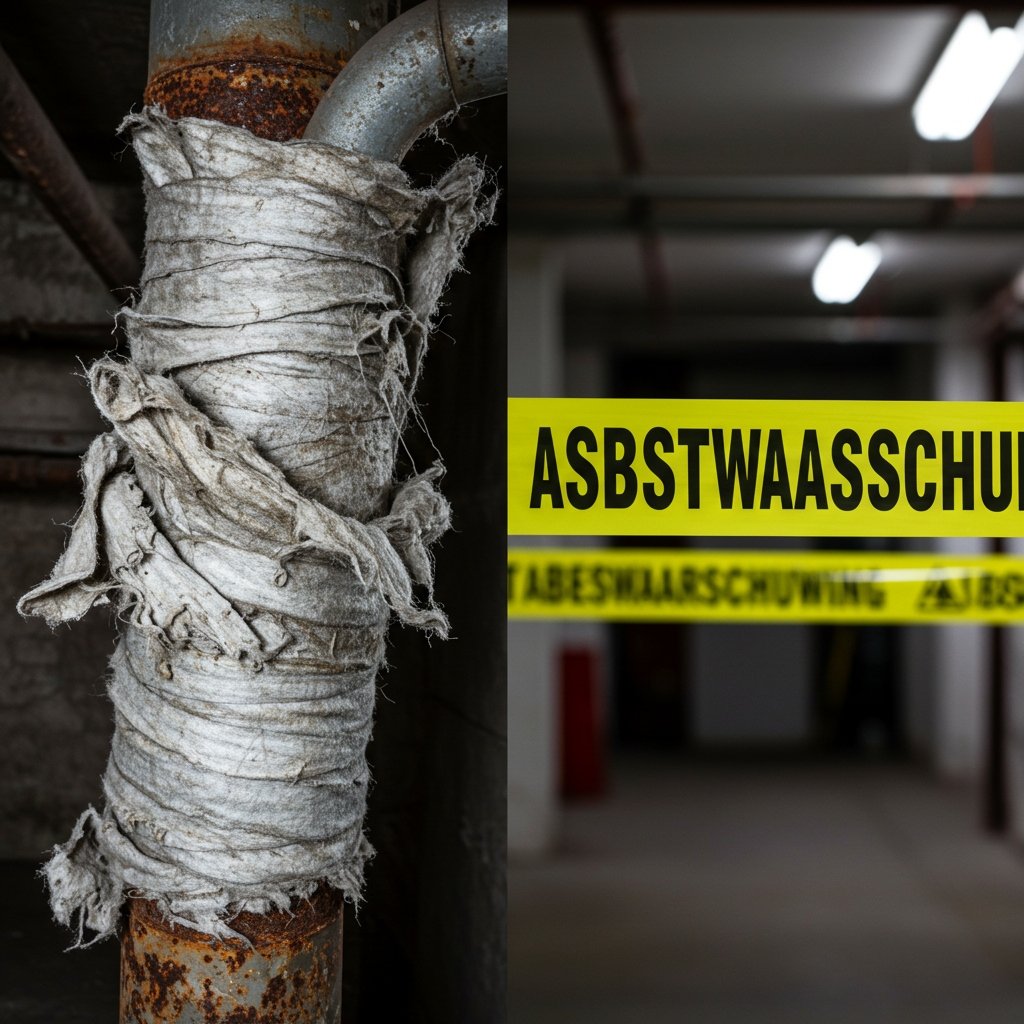Have you come across the term asbestlint and felt a mix of confusion and concern? You’re not alone. This single term refers to two completely different products, one a dangerous relic of the past and the other a crucial modern safety tool. Understanding the difference is vital for your health and safety, especially if you’re living in or renovating an older building. The old, historical asbestlint is an insulation product containing hazardous asbestos fibers, often found in older homes. In contrast, modern asbestlint is the plastic warning tape used by professionals to safely mark off asbestos removal sites and prevent accidental exposure.
This guide will clear up the confusion once and for all. We will walk you through how to identify potentially hazardous old asbestos tape, what to do if you find it, and how modern warning tape helps keep everyone safe. Therefore, by the end of this article, you will have the knowledge to protect yourself and your family from both misunderstanding and unnecessary exposure.
You Might Also Like: Мушкатни орашчић
What is Asbestlint? Two Tapes, Two Meanings
Clarifying the Confusion
First, let’s make the distinction crystal clear. When people talk about “asbestlint,” they could mean one of two things, and it’s crucial to know which is which—especially when safety is at stake.
Historical Asbestos Insulation Tape
This is the product that poses a health risk. It’s a whitish-grey, fabric-like or cardboard-like tape made with asbestos fibers. For decades, builders used it to insulate pipes and ductwork because it was excellent at resisting heat and fire, making it a preferred material for thermal insulation. If your home was built before 1990, you might find this material in your attic, basement, or around old heating systems where it may have been used extensively.
Modern Asbestos Warning Tape
This is a safety product. It is a non-hazardous plastic tape, usually bright yellow with black lettering for maximum visibility. Professionals use this tape to cordon off areas where they are removing asbestos, in compliance with legal safety standards. The tape clearly warns people to stay away from a potential hazard zone, reducing the risk of exposure.
In short, one is a hidden danger you might uncover unexpectedly, while the other is a visible warning designed to protect you and others nearby.
Hidden Danger: Understanding Historical Asbestos Insulation Tape
The “Miracle Material” That Turned Dangerous
For much of the 20th century, asbestos was hailed as a “miracle mineral.” Consequently, asbestos insulation tape became a go-to material in construction and industry for fireproofing and thermal control.
It was primarily used for its incredible heat resistance and durability. Builders wrapped asbestlint around hot water pipes, furnace ducts, and boiler systems to prevent heat loss and reduce the risk of fire in residential and commercial buildings. You can typically find this old tape in homes built between the 1950s and the late 1980s. Common places to check include:
- Joints on sheet metal heating, ventilation, and air conditioning (HVAC) ducts in basements, crawlspaces, and attics
- Wrapping around old hot water pipes, especially at the elbows and joints
- Insulation on and around old boilers and furnaces
Visually, this tape is distinct from modern tapes. It often looks like a thick, fibrous cloth or a type of plaster-coated paper, often resembling a bandage or gauze. Its color is typically white, off-white, or grey. Over time, it can become brittle, frayed, or damaged, which is when it becomes most dangerous due to fiber release.
The Health Risks You Can’t Ignore
How Asbestlint Exposure Harms the Body
The danger of asbestos comes from its microscopic fibers. When materials containing asbestos are disturbed or deteriorate, these tiny, needle-like fibers can become airborne and easily inhaled. If you inhale them, they can get trapped deep in your lungs and stay there permanently. Because the fibers are so durable, your body cannot break them down or remove them over time.
Over many years, this can lead to serious and often fatal diseases. It is important to understand that these conditions have a long latency period, meaning they can take 20 to 50 years or even longer to develop after the initial exposure. The main health risks include:
- Asbestosis: A chronic lung disease caused by the scarring of lung tissue. This scarring makes it progressively harder to breathe and lowers your overall lung capacity.
- Lung Cancer: Exposure to asbestos significantly increases the risk of developing lung cancer, and this risk is dramatically higher for smokers or those with long-term exposure.
- Mesothelioma: A rare but very aggressive cancer that affects the thin lining around the lungs, abdomen, or heart. It is almost exclusively caused by asbestos exposure and often detected at an advanced stage.
The key takeaway is that intact, undisturbed asbestos tape may not pose an immediate risk. The hazard arises when it is damaged, cut, sanded, or crumbled, releasing fibers into the air you breathe without even realizing it.
Found Suspected Asbestos Tape? A Step-by-Step Safety Guide
What to Do If You Encounter Asbestlint at Home
If you discover tape in your home that you suspect is asbestlint, the most important rule is simple: do not panic, and do not touch it. Handling it improperly can create a hazard where none existed before. Meanwhile, follow these safe and sensible steps to ensure minimal risk.
- Step 1: Leave It Alone. Do not try to scrape, brush, or peel the tape off. Do not disturb the area around it. The goal is to prevent any fibers from becoming airborne or spreading to adjacent rooms.
- Step 2: Visually Assess from a Safe Distance. Look for signs of damage. Is the tape tearing, crumbling, or flaking? Is it in an area with high traffic, vibration, or air currents that could disturb it? Damaged material poses a higher risk than intact surfaces.
- Step 3: Limit Access to the Area. Keep children and pets away from the area. If possible, close off the room to prevent anyone from accidentally bumping into or disturbing the material and creating further risk.
- Step 4: Contact a Certified Professional. Do not attempt to take a sample yourself. This can be dangerous and illegal in some jurisdictions. Instead, search for a certified asbestos inventory or removal company (in Dutch: gecertificeerd asbestinventarisatiebureau or asbestsaneringsbedrijf). These experts are trained to safely test materials and, if necessary, remove them according to strict safety regulations to prevent exposure.
Modern Asbestlint: The Role of Asbestos Warning Tape
Asbestlint and Keeping the Public Safe
Now, let’s turn to the other type of asbestlint: the modern warning tape. This product is a vital tool for public safety during asbestos abatement projects and plays an essential role in keeping people out of harm’s way.
This tape is made of durable plastic and is designed to be highly visible, typically featuring a bright yellow background with bold black text for easy recognition. It will have clear warnings such as “ASBEST,” “GEEN TOEGANG” (NO ACCESS), or the international asbestos warning logo that signals danger even to those unfamiliar with the language.
How It’s Used on Job Sites
Professionals use this tape for two main purposes, in line with regulations:
- To Cordon Off Work Zones: When asbestos is being removed, the area is sealed off to prevent fibers from spreading. This warning tape creates a clear boundary, signaling to everyone that they should not enter the hazardous area without proper protection.
- To Label Hazardous Waste: All asbestos-containing material that is removed must be carefully packaged in sealed, heavy-duty bags or plastic sheeting. This warning tape is then used to seal the packages and clearly label them as containing asbestos, ensuring they are handled and disposed of correctly according to environmental laws.
So, if you see this yellow and black tape, it means professionals are on-site managing an asbestos situation safely. It is a sign of protection and process, not a direct threat to your immediate health.
You Might Also Like: Caricatronchi
Safer Solutions: Modern Alternatives to Asbestos Insulation
Asbestlint Alternatives: A Healthier Way to Insulate
Thankfully, the days of using asbestos for insulation are long behind us. Today, there are many safe, effective, and often eco-friendly materials available to insulate your home’s pipes and ducts—offering peace of mind without sacrificing performance. Some of the most common alternatives include:
- Fiberglass: Made from fine glass fibers, this is a popular and cost-effective insulation material that is non-toxic and widely used in modern homes.
- Mineral Wool (or Rock Wool): Known for its excellent fire resistance and sound-dampening properties, this is an ideal substitute for asbestos insulation in both residential and industrial applications.
- Silicone Tape: A flexible and durable tape that provides good heat resistance for sealing joints without the health risks associated with older materials.
- Cellulose Insulation: An environmentally friendly option made from recycled paper products, treated to be fire-resistant and safe for indoor use.
These materials provide excellent thermal performance without posing the severe health risks associated with asbestos. It make them the preferred choice for contractors and homeowners alike.
Understanding Asbestlint Could Save Lives
The term asbestlint can be confusing, but now you know the critical difference between the two types. One is a historical insulation product that represents a potential danger hidden in older homes, while the other is a modern safety tool used to protect the public during abatement procedures.
If you suspect you have old asbestos tape in your home, remember the most important rule: leave it undisturbed and call a certified professional. Knowledge is your best defense. By understanding the risks and knowing the right steps to take, you can ensure your home remains a safe environment for you and your family—for years to come.

